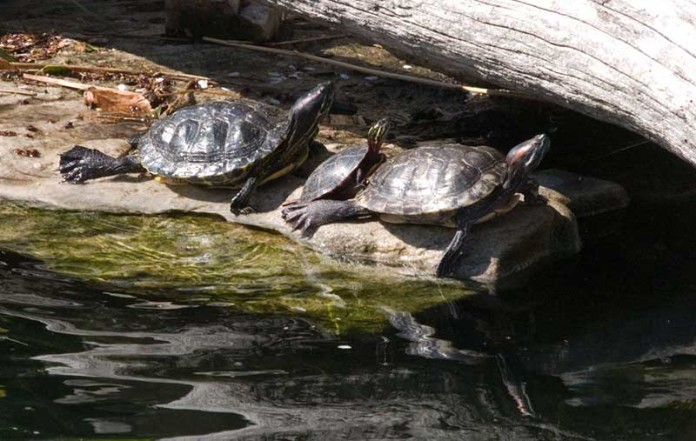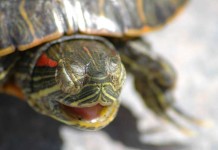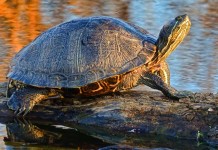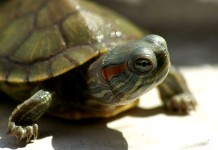Red eared sliders are by far the most popular pet turtle out there, but most people unfortunately do not take the time to get to know the species before bringing it into their home. Sure, the guy at the pet store can tell you the basics (what to feed it, what equipment you’ll need), but where would this turtle be if it was never hatched as a pet. What if it was hatched naturally in the wild? What would its natural habitat be then?
The red eared slider habitat in nature is much different than what we typically provide for them in our homes. In the wild, sliders live in almost every occurrence of fresh water in the eastern three quarters of the United States. Though they prefer calm, slow-moving water, they are comfortable in all freshwater rivers and streams.
A typical red eared slider natural habitat will include all the things that a good population of sliders needs to thrive: soft, muddy bottoms, plenty of aquatic vegetation, and a lot of good basking sites. The soft, muddy bottom is essential for the turtles to brumate – a minor form of hibernation that many reptiles go through. During brumation in the colder months, the sliders will bury themselves in the mud at the bottom and only come up every so often for air or food. The aquatic vegetation provides food and protection for the sliders, and basking sites for hatchlings. The basking sites—rocks, logs, and larger vegetation—are essential because sliders need to get out of the water during the hottest, brightest hours of the day to absorb sunlight for vitamin absorption and to regulate their temperature, i.e. to warm up.
Another essential part of any red eared slider habitat in the wild is a good place to lay the eggs. Like all aquatic turtles, sliders lay their eggs in the sand on the shore. Mating occurs in May and the females will lay their eggs in the following 1-2 months, so any body water with a consistent bank of sand on the shore is prime territory for a breeding population of red eared sliders. If you’ve ever seen video of sea turtles coming to shore and laying their eggs, and the eggs hatching, you have a pretty good idea of what this process is like.
In general, it’s pretty hard to successfully emulate a red eared slider habitat in your home, but as you can see, they need more than just a glass bowl to live in! They need clean water, a basking area, a varied diet, and plenty of stimulation.











